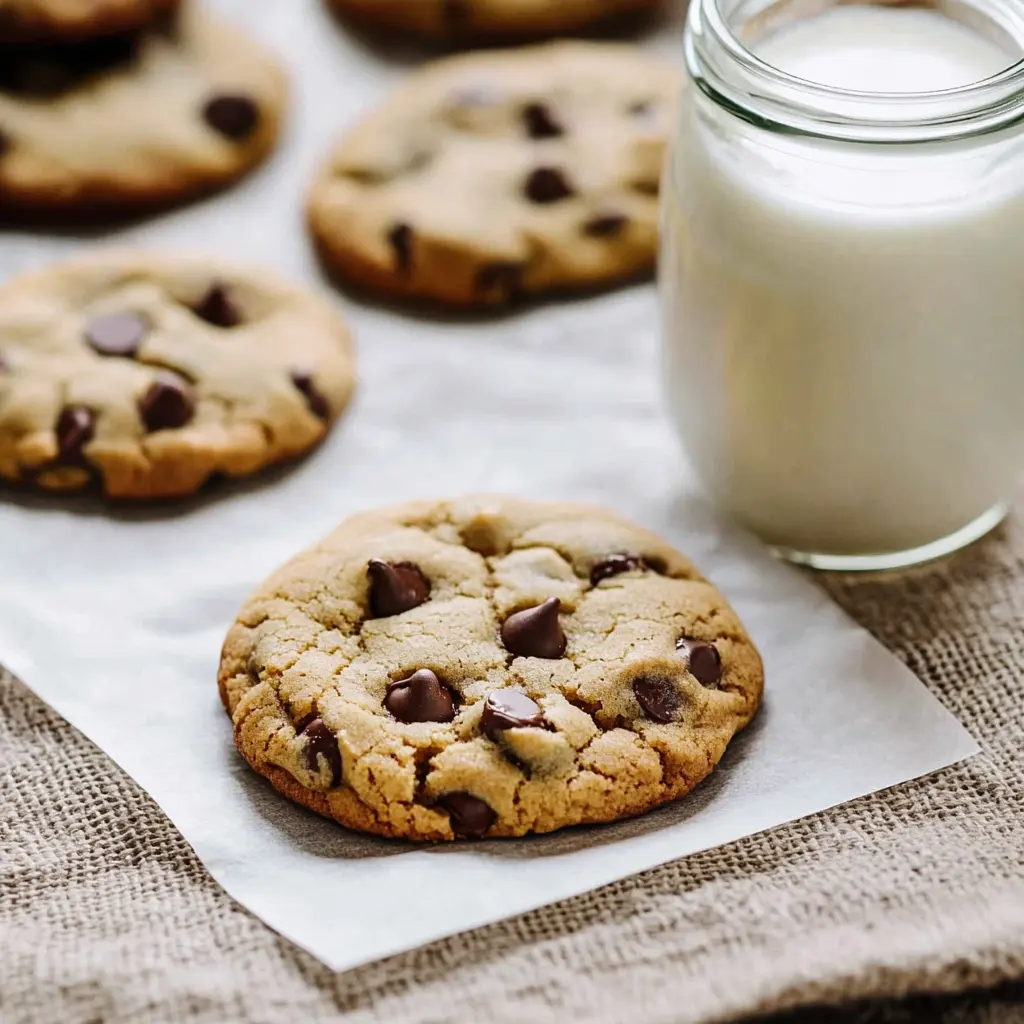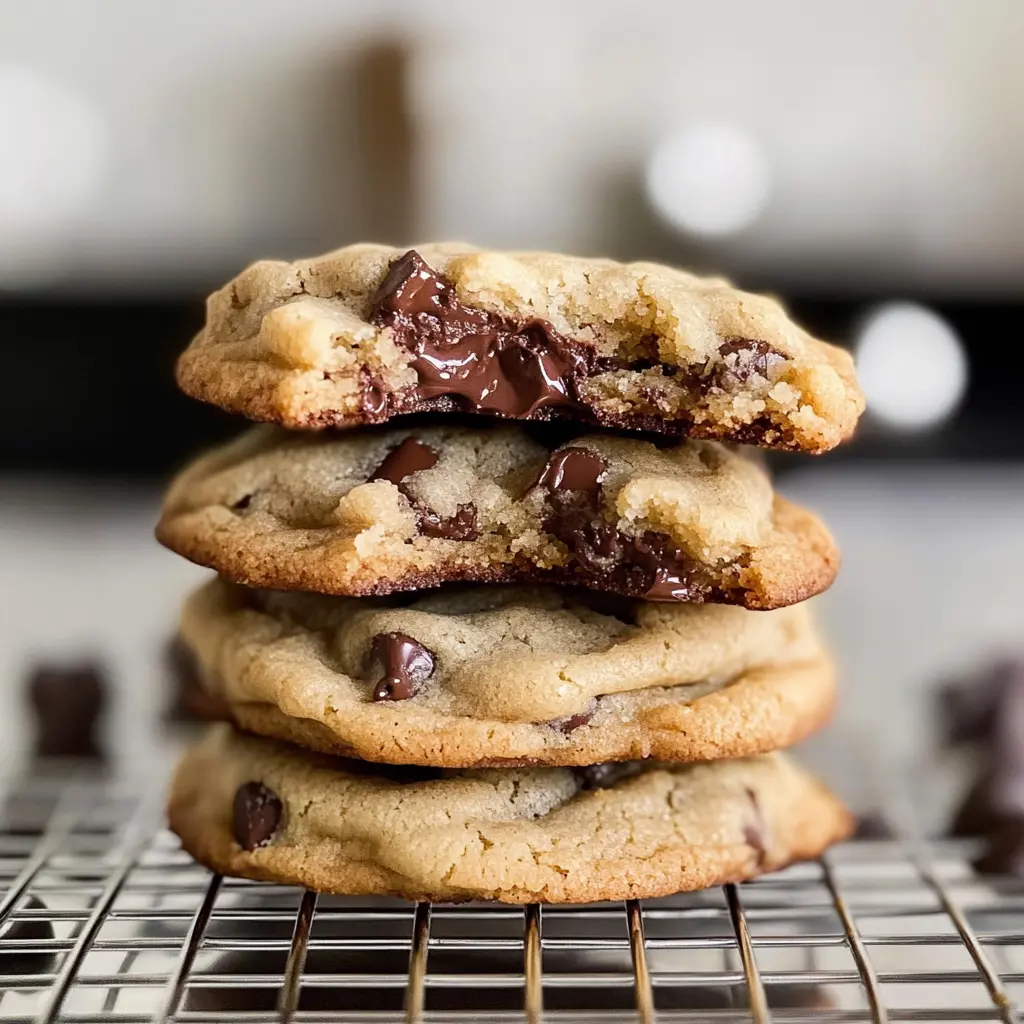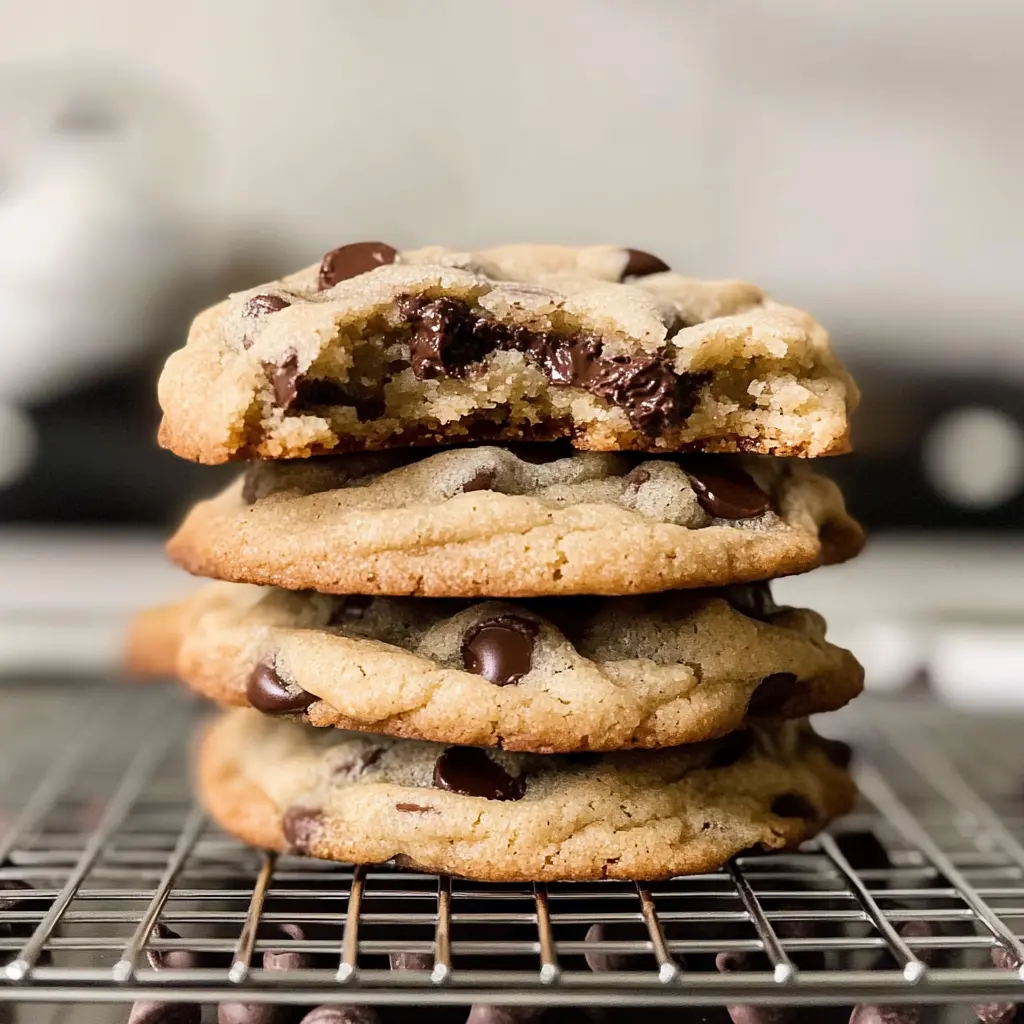Introduction
Chocolate chip cookies, a classic delight loved by many, bring joy with every bite. Whether it’s a fresh batch straight from the oven or a nostalgic reminder of childhood, these cookies have a special place in our hearts. However, as delicious as they are, it’s essential to be aware of the calories in a small homemade cookie. Understanding the calorie content can help manage dietary intake and maintain a balanced diet.
Knowing how many calories you’re consuming in each small homemade chocolate chip cookie can be eye-opening. This detailed analysis will explore the caloric content of these delightful treats, helping you make informed decisions. We will delve into the common ingredients, their nutritional impacts, and ways to calculate the calories. Additionally, we’ll offer tips for healthier alternatives and answer frequently asked questions. So, let’s dive into the world of homemade chocolate chip cookies and uncover the hidden details of their caloric content.
Stay tuned as we explore the details of your favorite treats and compare them to other comfort foods like Mac and Cheese Main Course.
Understanding Chocolate Chip Cookie Ingredients
Ingredients Overview
Homemade chocolate chip cookies typically consist of a few staple ingredients that contribute to their rich, delightful flavor and texture. Understanding the nutritional impact of these ingredients helps in managing calorie intake and making healthier choices. The common ingredients include flour, sugar, butter, and chocolate chips. Each plays a crucial role in the cookie’s structure and taste, but they also add to the caloric content.
Flour
Flour is the base of the cookie, providing structure and texture. Typically, all-purpose flour is used, which contains about 455 calories per cup. Flour is rich in carbohydrates, offering energy, but it has little fiber or protein, contributing mostly to the calorie count.
Sugar
Sugar adds sweetness and helps achieve the cookie’s tender texture. A cup of granulated sugar contains around 774 calories. It’s a significant source of empty calories, providing energy but no essential nutrients, which can quickly increase the caloric content.
Butter
Butter gives cookies their rich flavor and smooth texture. With approximately 810 calories per cup, it’s high in saturated fats. Butter contributes significantly to the calorie and fat content of the cookies, making moderation important.
Chocolate Chips
Chocolate chips are the star ingredient, adding bursts of chocolatey goodness. One cup of semi-sweet chocolate chips has about 805 calories. They are high in sugar and fat, enhancing the cookie’s flavor but also the calorie count.
Comparatively, ingredients in Mac and Cheese include pasta, cheese, and milk. Like cookies, they rely heavily on carbohydrates and fats, impacting their overall nutritional profiles. Understanding these components in both recipes can guide healthier eating habits.
Calculating Calories in a Small Homemade Chocolate Chip Cookie
Calorie Calculation Method
Calculating the calories in a small homemade chocolate chip cookie involves a few straightforward steps. By understanding the caloric content of each ingredient, you can determine the total calories and then divide by the number of cookies produced. This approach provides a clear picture of the caloric intake per cookie, aiding in dietary planning and portion control.
Step-by-Step Calculation
- List Ingredients and Quantities: Begin by listing all the ingredients and their respective quantities used in your cookie recipe.
- Determine Caloric Content of Each Ingredient: Refer to nutritional labels or databases to find the calorie content per unit of each ingredient. For example, one cup of flour has 455 calories, one cup of sugar has 774 calories, one cup of butter has 810 calories, and one cup of chocolate chips has 805 calories.
- Calculate Total Calories: Multiply the quantity of each ingredient by its caloric content. Sum these values to get the total calorie count for the entire batch of cookies.
- Divide by Number of Cookies: If your recipe makes 24 cookies, divide the total caloric content by 24 to find the calorie content per cookie.
Example Recipe Analysis
For instance, if a recipe includes:
- 2 cups of flour (910 calories)
- 1 cup of sugar (774 calories)
- 1 cup of butter (810 calories)
- 1 cup of chocolate chips (805 calories)
The total caloric content is 910 + 774 + 810 + 805 = 3,299 calories. If this recipe yields 24 cookies, each cookie contains approximately 137 calories.
This calculation method helps compare the caloric content of homemade treats to processed options. For example, the calorie content in Kraft Mac and Cheese Nutrition reveals how processed foods might differ in nutritional value from homemade versions, highlighting the benefits of cooking at home.
Average Calorie Content
Average Calorie Content
When comparing various homemade chocolate chip cookie recipes, you’ll find a range of calorie counts. The caloric content of each cookie can vary significantly depending on the specific ingredients and their quantities. On average, a small homemade chocolate chip cookie contains between 130 to 170 calories.
Different recipes use varying amounts of sugar, butter, and chocolate chips, which are the primary contributors to the calorie count. For instance, recipes that call for additional mix-ins like nuts or more chocolate will have a higher caloric content. Conversely, recipes that use ingredient substitutes such as whole wheat flour or reduced sugar options may be on the lower end of the calorie spectrum.
Here’s a comparison to illustrate the variance:
- A basic recipe with standard ingredients might have around 150 calories per cookie.
- A healthier version with reduced sugar and whole wheat flour could drop to about 130 calories per cookie.
- A rich, indulgent recipe with extra chocolate and nuts might push the calorie count up to 170 per cookie.
Understanding these differences helps in choosing recipes that align with your dietary goals. For a broader context on comfort foods and their nutritional impacts, consider the Nutritional Impact of other popular dishes like mac and cheese. By comparing these foods, you can make more informed choices about balancing indulgence and nutrition.
Factors Affecting Calorie Count on small homemade cookie
Factors Influencing Calorie Count
The calorie count of a small homemade chocolate chip cookie can be influenced by several factors, including the size and thickness of the cookie, ingredient variations, and baking methods.
Size and Thickness of the Cookie
The size and thickness of your cookie play a significant role in determining its caloric content. Larger and thicker cookies naturally contain more dough and ingredients, leading to a higher calorie count. For example, a small cookie with a diameter of about 2 inches might have around 130 calories, while a larger, thicker cookie could easily exceed 200 calories. Uniform portioning is essential to ensure consistent calorie counts across batches.
Ingredient Variations
The choice of ingredients significantly affects the calorie content. Substituting high-calorie ingredients like butter and sugar with lower-calorie alternatives can reduce the overall caloric value of the cookies. For instance, using applesauce instead of butter or a sugar substitute can lower the calorie count. Additionally, incorporating whole wheat flour instead of all-purpose flour can increase the fiber content and provide a slightly lower calorie count due to its higher nutritional density.
Baking Methods
The method of baking can also influence the final calorie count. Traditional baking at higher temperatures can lead to caramelization and slight calorie increase due to the Maillard reaction. On the other hand, baking at a lower temperature for a longer duration might retain more moisture and potentially lower the calories slightly due to less caramelization.
Comparatively, factors affecting the calorie content in Mac and Cheese are similar, including the types of cheese used, the addition of high-calorie mix-ins like bacon or extra cheese, and the cooking method. For example, baked mac and cheese often has a higher calorie count due to added toppings like breadcrumbs and additional cheese for a crispy crust. By understanding these influencing factors, you can better manage and adjust recipes to suit your dietary needs.
Healthier Alternatives
Healthier Cookie Options
Finding healthier alternatives for making homemade chocolate chip cookies can significantly reduce their calorie content without sacrificing too much flavor. By making strategic substitutions, you can enjoy your favorite treats in a more health-conscious way.
Whole Wheat Flour
Substituting all-purpose flour with whole wheat flour is a simple yet effective way to make your cookies healthier. Whole wheat flour has more fiber, vitamins, and minerals compared to refined flour. This addition of fiber helps in better digestion and provides a feeling of fullness, which can prevent overeating. While the texture might be slightly denser, the nutty flavor of whole wheat flour can add an interesting twist to your cookies. A cup of whole wheat flour contains about 408 calories, slightly lower than all-purpose flour, which helps in cutting down the overall calorie count.
Reduced Sugar
Reducing the sugar content in your cookie recipe can significantly lower the calorie count. Sugar alternatives like stevia, erythritol, or even natural sweeteners like honey or maple syrup can be used in moderation. These alternatives have fewer calories and a lower glycemic index, which is beneficial for maintaining stable blood sugar levels. For instance, using half the amount of sugar or a suitable sugar substitute can cut down on the empty calories and still keep your cookies sweet and delicious.
Dark Chocolate Chips
Opting for dark chocolate chips instead of semi-sweet or milk chocolate chips can make your cookies healthier. Dark chocolate has less sugar and more cocoa, providing antioxidants and beneficial minerals. It also has a richer flavor, which means you might need less of it to achieve the desired taste. A cup of dark chocolate chips has about 718 calories, compared to 805 calories in semi-sweet chocolate chips, making it a slightly lower-calorie option while offering added health benefits.
Similarly, when making healthier versions of Mac and Cheese, using whole grain pasta, reducing the amount of cheese, and incorporating vegetables can lower the calorie content and boost the nutritional value. These simple substitutions in both cookies and mac and cheese recipes can help you enjoy your favorite comfort foods with a healthier twist.

The Science Behind Baking Perfect Homemade Chocolate Chip Cookies
The Science of Baking Cookies
Baking the perfect homemade chocolate chip cookie is both an art and a science. Each ingredient plays a crucial role in the final product, from the texture to the flavor. Understanding the science behind these ingredients and the chemical reactions that occur during baking can help you achieve cookie perfection every time.
Understanding the Role of Ingredients
The Function of Flour
Flour serves as the foundation of the cookie, providing structure and bulk. When mixed with liquids, flour forms gluten, a network of proteins that gives cookies their shape and chewy texture. Different types of flour can affect the cookie’s texture; for example, using bread flour, which has more protein, will result in chewier cookies, while cake flour, with less protein, will make them more tender.
How Sugar Affects Texture
Sugar is essential not only for sweetness but also for texture. It affects how cookies spread and their overall crispiness. When sugar melts in the oven, it helps create a chewy texture. Brown sugar, which contains molasses, adds moisture and chewiness, while granulated sugar leads to a crisper texture. The type and amount of sugar used can significantly influence the final outcome.
Butter’s Role in Flavor and Texture
Butter contributes to the rich flavor and smooth texture of cookies. When creamed with sugar, butter traps air, helping the cookies rise. The fat in butter coats the flour proteins, preventing them from forming too much gluten, which keeps cookies tender. Melted butter, on the other hand, can lead to denser, chewier cookies. The temperature and state of butter used in the recipe are key to achieving the desired texture.
The Importance of Eggs
Eggs act as a binding agent, holding the dough together. They also add moisture and contribute to the cookies’ leavening. The proteins in eggs provide structure, while the fats add richness. Eggs help the cookies rise and maintain their shape. The ratio of egg yolks to egg whites can alter the texture; more yolks make cookies richer and chewier, while whites contribute to a lighter, crisper texture.
The Chemical Reactions in Baking
How Baking Soda and Baking Powder Work
Baking soda and baking powder are leavening agents that cause cookies to rise. Baking soda (sodium bicarbonate) reacts with acidic ingredients, producing carbon dioxide gas that creates lift. This reaction happens immediately, so baking soda should be baked quickly after mixing. Baking powder contains both an acid and a base and releases gas in two stages—once when mixed and again when heated. This makes it ideal for recipes without other acidic ingredients. Understanding their roles helps in choosing the right leavening agent for your desired cookie texture.
The Maillard Reaction and Cookie Browning
The Maillard reaction is a chemical reaction between amino acids and reducing sugars that gives browned foods their distinctive flavor. In cookies, this reaction occurs at higher temperatures and contributes to the golden-brown color and complex flavors. It also enhances the crispy edges and rich, nutty notes in the cookies. The reaction is influenced by the sugar and protein content, as well as the baking temperature and time. Mastering the Maillard reaction can elevate the flavor profile of your cookies.
By understanding the science behind each ingredient and the chemical reactions during baking, you can tweak and perfect your homemade chocolate chip cookie recipe. Whether you aim for chewy, crispy, or a balance of both, the interplay of these elements allows for endless experimentation and delicious results.

Conclusion
Conclusion
In summary, understanding the calories in a small homemade cookie involves analyzing ingredient choices and portion sizes. While traditional recipes yield cookies with around 130 to 170 calories, making thoughtful substitutions can create healthier versions. Whole wheat flour, reduced sugar, and dark chocolate chips are excellent alternatives to lower calorie intake.
Enjoying homemade chocolate chip cookies in moderation is key. By being mindful of ingredients and serving sizes, you can indulge in this classic treat without overdoing it. Just as with other comfort foods like mac and cheese, balance and awareness are crucial. For more on comfort foods and healthier options, explore the Ultimate Comfort Food Guide.
Frequently Asked Questions
FAQs
How many calories are in a small homemade chocolate chip cookie?
A small homemade chocolate chip cookie typically contains between 130 to 170 calories, depending on the ingredients and size. Standard recipes with traditional ingredients like butter, sugar, and chocolate chips usually fall in this range. Adjusting portions and ingredient choices can help manage calorie intake.
What is the nutritional breakdown of a homemade chocolate chip cookie?
A typical small homemade chocolate chip cookie includes:
- Calories: 130-170
- Fat: 7-9 grams
- Carbohydrates: 16-22 grams
- Protein: 1-2 grams
- Sugar: 10-14 grams
These values can vary based on specific recipes and ingredient choices.
Can I make low-calorie chocolate chip cookies at home?
Yes, you can make low-calorie chocolate chip cookies by using healthier ingredients and substitutes. Options include using whole wheat flour instead of all-purpose flour, reducing sugar or using sugar alternatives, and incorporating dark chocolate chips. These changes can significantly lower the calorie content without compromising too much on taste.
How do ingredient substitutions affect calorie count?
Ingredient substitutions can significantly impact the calorie count. For instance, using applesauce instead of butter reduces fat and calorie content. Similarly, using a sugar substitute or reducing sugar can lower the overall calories. Whole wheat flour adds fiber and reduces calorie density compared to refined flour. Each substitution can adjust the nutritional profile of the cookies, making them healthier.
These FAQs are similar to those found in discussions about Mac and Cheese Nutrition, where ingredient choices and portions also play crucial roles in the nutritional outcomes.



